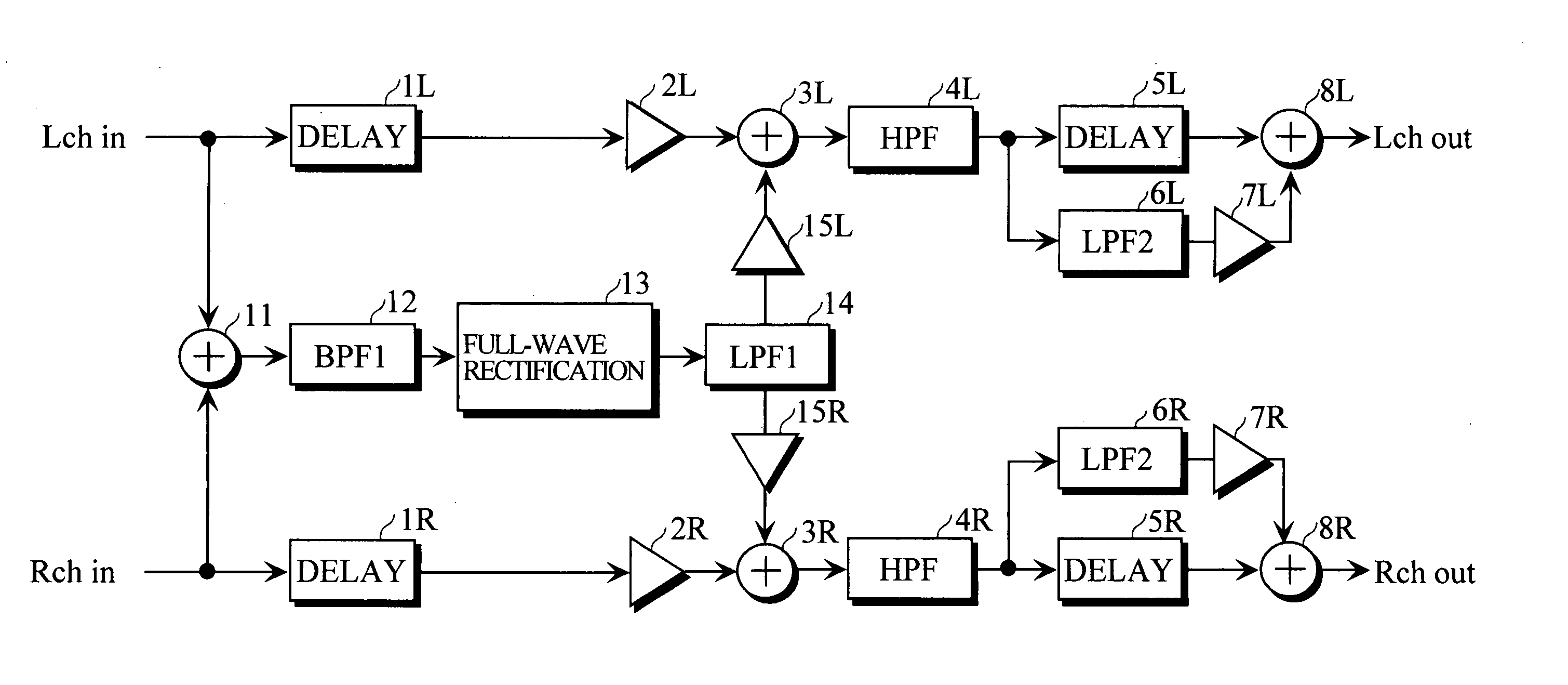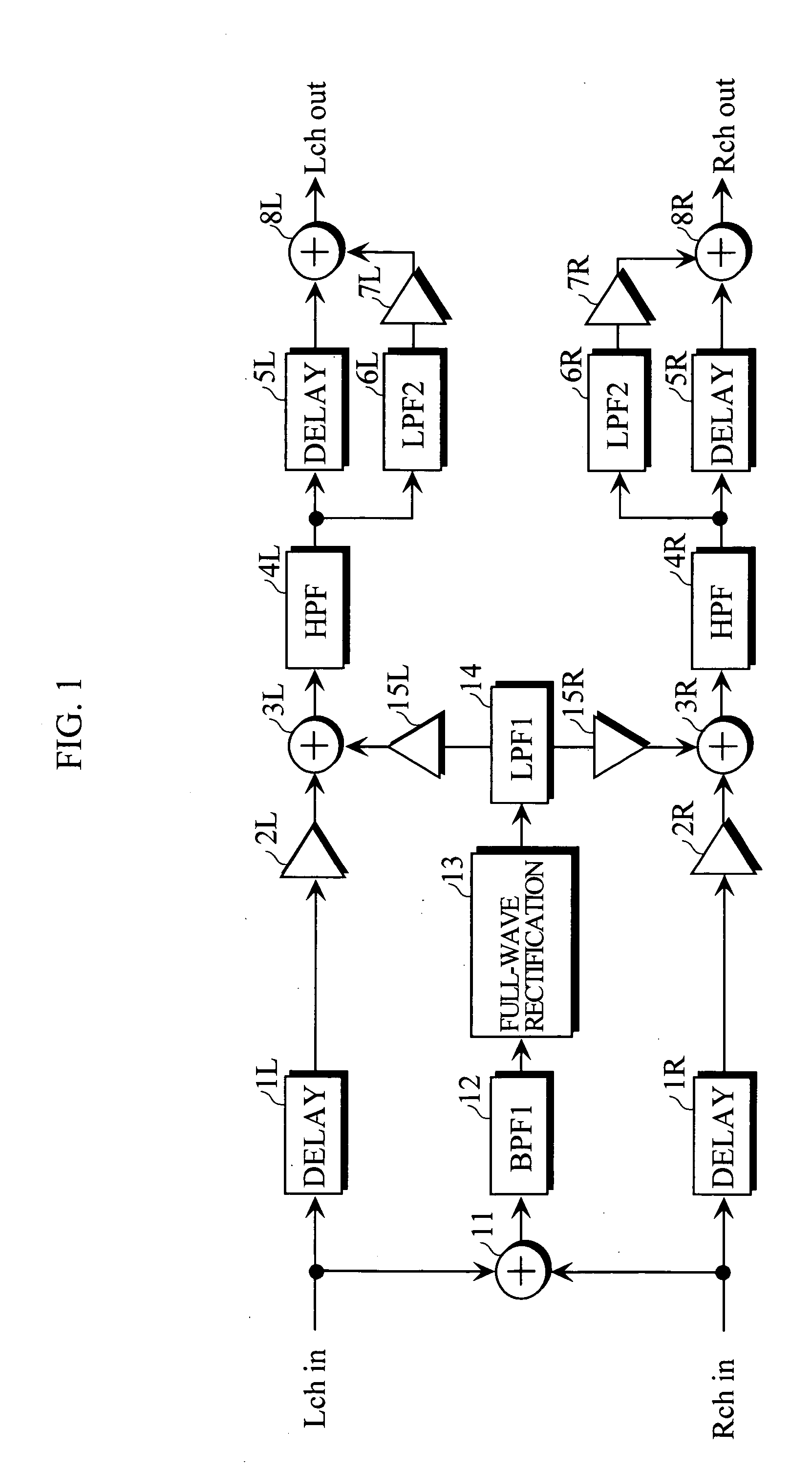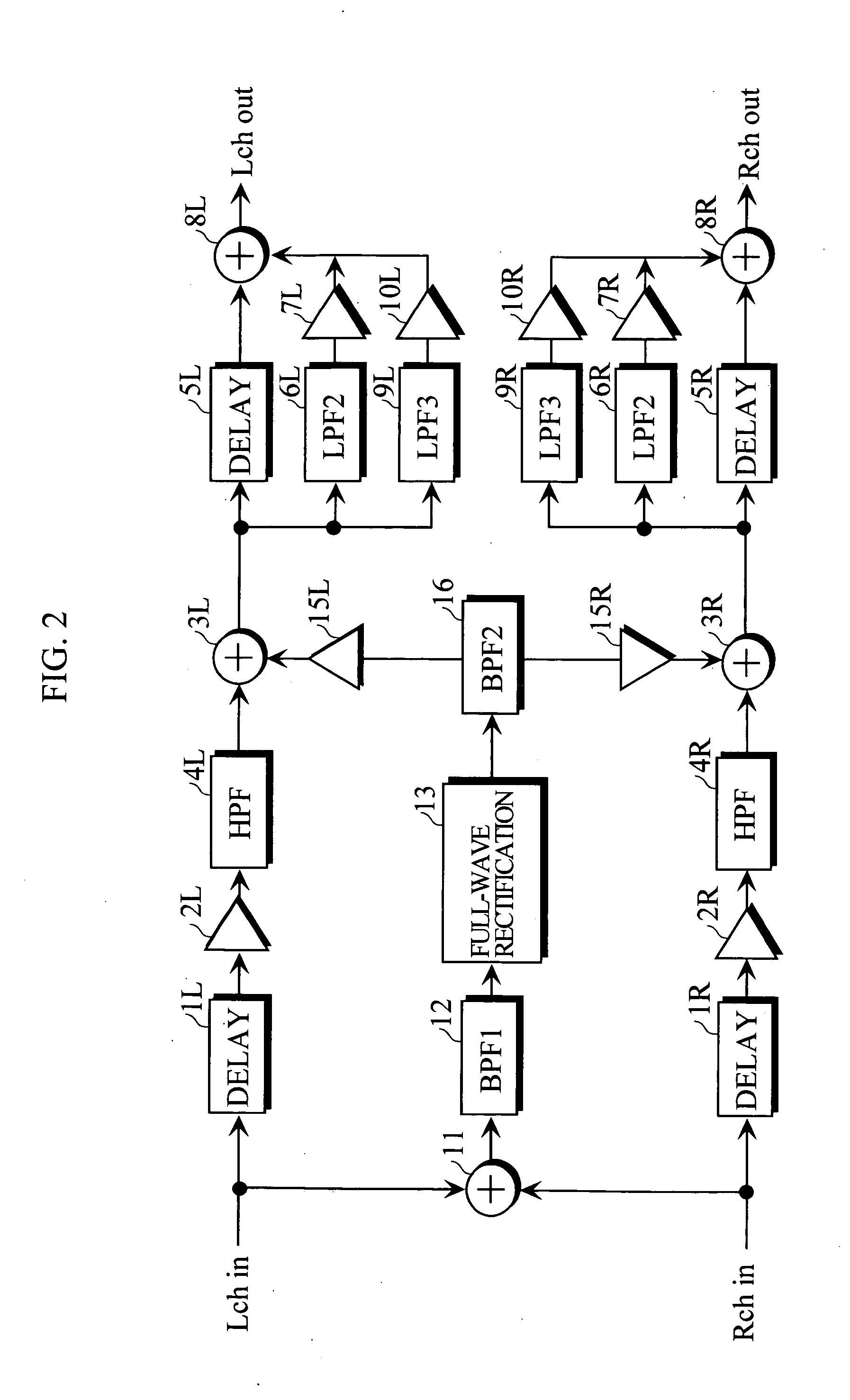Bass boost circuit and bass boost processing program
- Summary
- Abstract
- Description
- Claims
- Application Information
AI Technical Summary
Benefits of technology
Problems solved by technology
Method used
Image
Examples
embodiment 1
[A] Description of Embodiment 1
[1] Description of a Bass Pseudo Reproducing Device
[0024]FIG. 1 shows a constitution of a bass boost circuit according to an embodiment 1.
[0025] Audio signals comprising an L channel signal (Lch in) and a R channel signal (Rch in) are inputted to the bass boost circuit. The L channel signal is transmitted to an adder 3L through a delay circuit 1L and an amplifier 2L. In addition, the L channel signal is transmitted to an adder 11 also. The R channel signal is transmitted to an adder 3R through a delay circuit 1R and an amplifier 2R. In addition, the R channel signal is also transmitted to the adder 11.
[0026] The L channel signal and the R channel signal are added in the adder 11. An output of the adder 11 is transmitted to a full-wave rectification circuit 13 through a band-pass filter (BPF1) 12 which transmits only a signal of a predetermined frequency. Characteristics and a function of the band-pass filter (BPF1) 12 will be described below. The f...
embodiment 2
[B] Description of Embodiment 2
[0048]FIG. 2 shows a constitution of a boost circuit according to a second embodiment 2.
[0049] The embodiment 2 is different from the embodiment 1 in the following points. [0050] (1) High-pass filters (HPF) 4L and 4R are provided not at the subsequent stage of adders 3L and 3R but provided at the previous stage of the adders 3L and 3R. Accordingly, instead of the low-pass filter (LPF) 14 provided at the subsequent stage of the full-wave rectification circuit 13, a band-pass filter (BPF2) 16 having functions of both low-pass filter (LPF1) 14 and high-pass filters (HPF) 4L and 4R is used.
[0051] (2) A series circuit of a low-pass filter (LPF3) 9L (9R) and an amplifier 10L (10R) is provided in parallel to a series circuit of a low-pass filter (LPF2) 6L (6R) and an amplifier 7L (7R). Characteristics of the low-pass filter (LPF2) 6L (6R) and the low-pass filter (LPF3) 9L (9R) are set as shown in a table 2, for example. In addition, when it is assumed that ...
PUM
 Login to View More
Login to View More Abstract
Description
Claims
Application Information
 Login to View More
Login to View More - R&D
- Intellectual Property
- Life Sciences
- Materials
- Tech Scout
- Unparalleled Data Quality
- Higher Quality Content
- 60% Fewer Hallucinations
Browse by: Latest US Patents, China's latest patents, Technical Efficacy Thesaurus, Application Domain, Technology Topic, Popular Technical Reports.
© 2025 PatSnap. All rights reserved.Legal|Privacy policy|Modern Slavery Act Transparency Statement|Sitemap|About US| Contact US: help@patsnap.com



